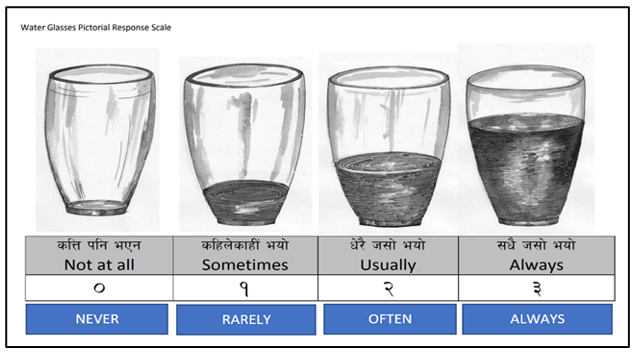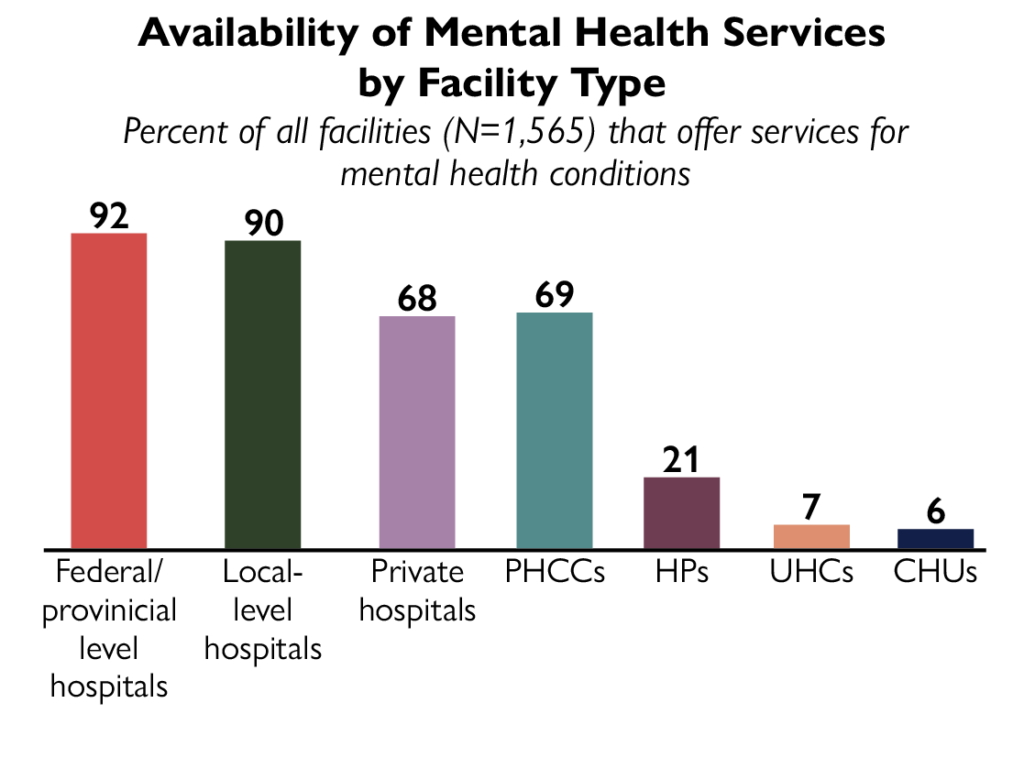Nepal Collects New Data to Promote Mental Health and Well-being

Today, October 10th, is World Mental Health Day, and The DHS Program is pleased to shine a spotlight on our implementing partners’ progress toward Sustainable Development Goal Target 3.4. The Nepal Ministry of Health and Population has prioritized ‘promoting mental health and well-being’ by collecting data on mental health in their two most recent surveys: the 2022 Nepal Demographic and Health Survey and the 2021 Nepal Health Facility Survey.
In Nepal, 22% of women and 11% of men age 15-49 reported experiencing symptoms of anxiety in the two weeks before the survey. Symptoms of anxiety include becoming easily annoyed or irritable; feeling nervous, anxious, or on edge; and worrying too much about different things. In addition, 5% of women and 2% of men experienced symptoms of depression in the two weeks before the survey. The most common symptom of depression experienced by women was feeling tired or having little energy, while for men it was trouble falling asleep, staying asleep, or sleeping too much.

The 2022 Nepal DHS used the new optional mental health module which was developed to focus on anxiety and depression, two of the leading causes of mental health disorders globally. Notably, the mental health module does not provide clinical diagnoses or measure the prevalence of anxiety or depression; rather, it collects information on respondents who simply report experiencing symptoms. The mental health module includes two commonly used tools that have been validated in a wide range of settings. The Generalized Anxiety Disorder instrument (GAD-7) is a seven-item scale with scores ranging from 0-21 to measure symptoms of anxiety. For the purposes of international comparison, respondents are considered to have symptoms of anxiety with a GAD-7 score of 6 or higher. The Patient Health Questionnaire (PHQ-9) is a nine-item scale based on the clinical diagnostic criteria that measures symptoms and severity of depression. For the purposes of international comparison, respondents are considered to have symptoms of depression if their PHQ-9 score is 10 or higher on a scale of 0-27.
Special care was taken in adapting and translating the questions to ensure they are understood by survey respondents. Working together with the Transcultural Psychosocial Organization Nepal (TPO Nepal), the 2022 Nepal DHS team adapted the mental health module questions to include appropriate terms and culturally meaningful idioms. Moreover, it was concluded that responses like “never” “rarely”, “often” and “always” were difficult for respondents to self-define. The 2022 Nepal DHS team decided to use the Water Glass Pictorial Scale to help respondents better understand the questions and more accurately capture their perceptions and experiences. An empty glass indicates “never,” a glass one-fourth filled indicates “rarely,” a half-filled glass indicates “often,” and a glass three-fourths filled indicates “always.” This visual chart was helpful in capturing the perceptions of respondents and contextualizing reported severity of symptoms.

The 2021 Nepal Health Facility Survey (NHFS), a Service Provision Assessment, collected information from health facilities in Nepal on the delivery of health care services and the preparedness of facilities to provide quality health services including mental health services. One in four health facilities in Nepal diagnoses, prescribes treatment for, or manages patients with mental health conditions. The availability of mental health services varies dramatically by facility type, from 92% of federal/provincial level hospitals and 90% of local-level hospitals to 7% of urban health centers (UHCs) and 6% of community health units (CHUs). The 2021 NHFS also assessed the availability of essential medicines and commodities at facilities that offer mental health services and found that availability of medicines and commodities for mental health conditions is higher in private than in public facilities and is higher in urban areas than in rural areas.

Data on how the availability of mental health services varies across Nepal can help determine the areas where the Government of Nepal and the private sector can intervene to increase access to mental health care. Additionally, data about the availability of essential medicines at facilities offering mental health services provide important information about facilities’ readiness to provide quality mental health care. Further, data about women and men’s experiences of the symptoms of depression and anxiety raise awareness of population-level mental health needs. By collecting both population-level data on experience of mental health symptoms and facility-level data about mental health service readiness and quality of care, policy makers, program managers, and health care providers in Nepal can better understand where mental health needs are greatest, determine whether existing mental health services and resources are adequate, and advocate for policies and programs to address the mental health of those populations where the needs are greatest.
Read more about mental health from the 2022 Nepal DHS:
Read more about mental health from the 2021 Nepal HFS:


Promoting mental health and well-being through data collection is a crucial step towards understanding and addressing mental health challenges in Nepal. It’s inspiring to witness efforts dedicated to gathering data that will likely pave the way for informed policies and targeted interventions.